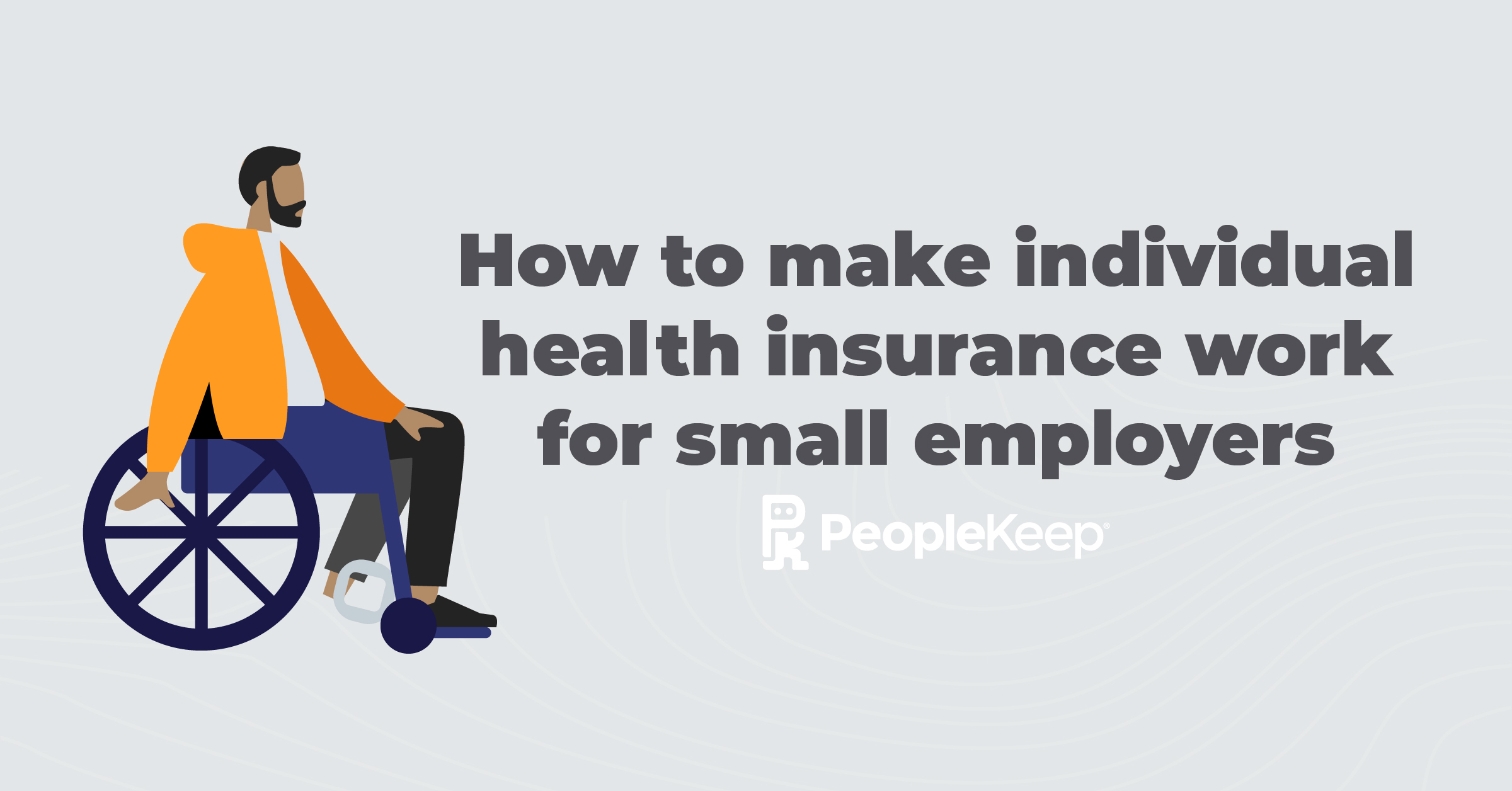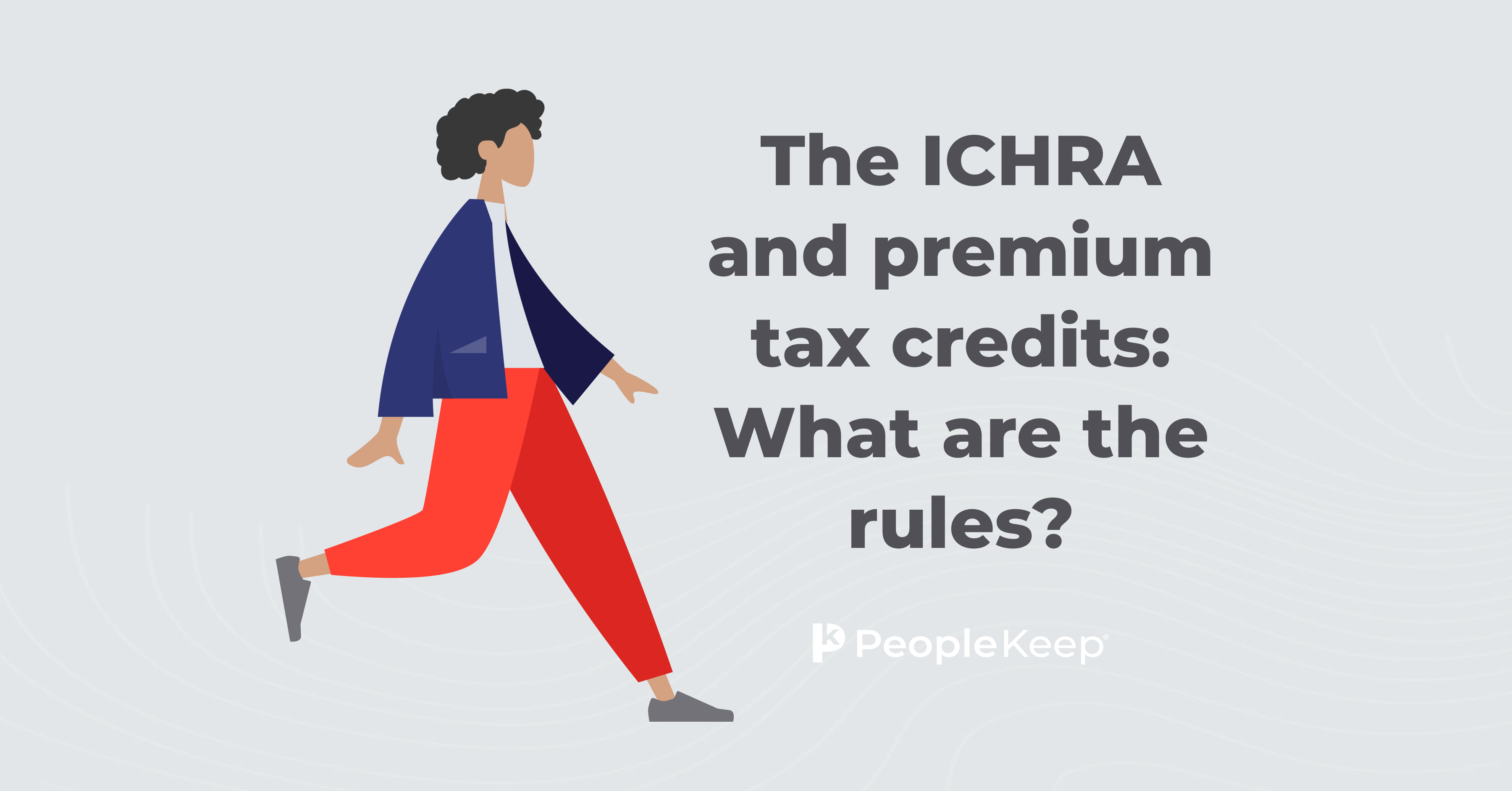The least and most expensive states for individual health insurance
By Elizabeth Walker on November 18, 2024 at 10:20 AM
Having a health insurance plan is an excellent way to ensure you have access to the care you need to stay healthy. But depending on where you live, the cost of individual health coverage may be more expensive than you expect.
Knowing how location factors into your health plan costs can help you shop for a budget-friendly policy that will meet your and your family’s needs—regardless of the state you live in.
In this blog post, you’ll learn:
- How location impacts the cost of health insurance, plus a comparison of the least and most expensive states for coverage in 2025.
- The basics of individual health insurance, including what factors affect your premium rate.
- How health reimbursement arrangements (HRAs) can help lower your out-of-pocket costs.
What is individual health insurance?
Individual health insurance is a health plan that consumers buy on their own without the aid of their employer. It doesn’t include some federal health programs, such as Medicaid. Despite what its name suggests, individual health insurance includes single coverage and family plans.
People who are shopping for an individual plan can buy one on a public or private health exchange.
Here’s how the health exchanges work:
- Public exchanges include the federal Health Insurance Marketplace and state-based marketplaces. You can buy a plan directly from the Marketplace or through a broker.
- For the 2025 Open Enrollment Period, 31 states use the federal Marketplace. The remaining 19 states plus the District of Columbia have state-based marketplaces1.
- Public exchanges only sell qualified health plans that are compliant with the Affordable Care Act (ACA). Depending on your area, you may also be able to enroll in a dental or vision plan.
- Private exchanges allow you to buy an individual plan directly from a health insurance company, licensed agent, or broker.
- Private exchanges sell ACA-compliant health plans as well as supplemental and limited coverage options, including short-term health plans, vision plans, and dental coverage.
- Eligible people can only qualify for and receive premium tax credits or a cost-sharing subsidy through a public exchange.
Whether you buy your plan on a private or public exchange, your policy stays with you until you cancel it as long as you pay your premium on time.
Additionally, regardless of where you shop, your health insurer can’t deny you coverage due to pre-existing conditions. They also can’t charge you a higher rate because of these conditions.
In addition to your premium, your plan will most likely have:
- An annual deductible: This is how much you’ll pay out-of-pocket until your insurer begins to cover your expenses
- A copayment, which is a form of cost-sharing for certain services
- A coinsurance percentage, which is a set percentage you must pay for covered services after meeting your deductible
- An out-of-pocket maximum
These amounts will depend on the type of plan and metal tier level you choose to buy.
Outside of Marketplace plans, one other type of coverage counts as individual health insurance: Medicare. However, the cost breakdowns in this article apply only to Marketplace plans.
How much does individual health insurance cost on average?
According to KFF, the national average monthly self-only premium for a 2025 benchmark ACA plan is $4972. A benchmark plan is the second-lowest-cost silver plan available on public health insurance marketplaces. But insurers determine your premium based on several factors:
Health insurance companies use the following to calculate your premium:
- Your age
- Location
- Family status
- Tobacco use
- Metal tier plan type, such as gold, silver, or bronze
- Health plan type
- For example, preferred provider organizations (PPOs) are often more expensive health insurance plans than health maintenance organizations (HMOs)
Luckily, if you’re eligible for premium tax credits and other cost-sharing subsidies, your chosen health plan will be more affordable.
If purchasing a benchmark silver plan costs more than 8.5% of your actual household income, you can receive premium tax credits. Due to the Inflation Reduction Act, this current income eligibility criteria will remain in effect through the end of 2025.
If this extension expires, premium tax credit eligibility will revert to only those with incomes between 100% and 400% of the federal poverty level for 2026.
As mentioned above, only individuals who purchase their plan on a public exchange can apply for premium tax credits to lower the annual cost of health insurance.
The top 10 least expensive states for individual health insurance
The following chart outlines the 10 states with the lowest average monthly premiums for individual health insurance in 20253. The rates below are for a 40-year-old nonsmoker on a benchmark Marketplace plan.
|
|
State |
Average monthly premium for a benchmark silver plan |
| 1 | New Hampshire |
$325 |
| 2 | Minnesota |
$363 |
| 3 | Maryland |
$365 |
| 4 | Virginia |
$372 |
| 5 | Indiana |
$382 |
| 6 | Michigan |
$404 |
| 7 | Arizona |
$410 |
| 8 | Nevada |
$414 |
| 9 | Rhode Island |
$425 |
| 10 | Iowa |
$429 |
The top 10 most expensive states for individual health insurance
The following chart outlines the 10 states with the most expensive monthly premiums for individual health insurance in 20253. The rates below are for a 40-year-old nonsmoker on a benchmark Marketplace plan.
|
|
State |
Average monthly premium for a benchmark silver plan |
| 1 | Vermont |
$1,277 |
| 2 | Alaska |
$1,045 |
| 3 | West Virginia |
$919 |
| 4 | Wyoming |
$871 |
| 5 | New York |
$790 |
| 6 | Connecticut |
$693 |
| 7 | South Dakota |
$619 |
| 8 | Nebraska |
$600 |
| 9 | District of Columbia |
$578 |
| 10 | Montana |
$554 |
How an HRA from your employer can help you control your healthcare costs
Depending on where you live, you may be concerned about the cost of health insurance. But before you decide to go uninsured, you have some options. If your employer accepts input on their benefits package, you can recommend a health reimbursement arrangement (HRA).
An HRA is a flexible and customizable benefit employers offer their employees to help them make their healthcare costs—including health insurance policy premiums—more affordable. With this health benefit, your employer reimburses you tax-free for your premiums plus qualified out-of-pocket costs.
Eligible expenses include:
- Prescription drugs
- Mental health counseling
- Over-the-counter drugs
- Doctor visits
- Emergency care
With an HRA, your employer gives you a monthly allowance to spend on medical expenses. Once you incur an eligible healthcare expense, they’ll reimburse you up to your set allowance amount. Allowance amounts can roll over monthly. But HRA funds stay with your employer at the end of the year and if you leave their company—unlike a health savings account (HSA).
The type of HRA that covers the cost of individual health insurance coverage is a stand-alone HRA. These HRAs are “stand-alone” because they don’t integrate with group health plans. Instead, they cover the cost of your preferred individual health plan and medical services.
The two common types of stand-alone HRAs are the qualified small employer HRA (QSEHRA) and the individual coverage HRA (ICHRA). Let’s go into detail about how these two health benefits can help you save money on your medical costs.
Qualified small employer HRA (QSEHRA)
A QSEHRA is an excellent option if your employer has fewer than 50 full-time equivalent employees (FTEs). While all full-time W-2 employees are automatically eligible for the benefit, you must have a health insurance policy with minimum essential coverage (MEC) to participate.
Here are some other important points about the QSEHRA:
- With a QSEHRA, your individual plan premiums and out-of-pocket expenses may be eligible for reimbursement. However, your employer can choose only to reimburse you for health insurance premiums.
- The QSEHRA has annual maximum contribution limits that the IRS sets annually. Employers can’t offer more than this amount. Once you hit your allowance limit, you can’t exceed it.
- If your monthly allowance runs out, you’ll have to wait until the following month to gain access to more HRA funds, depending on how your employer sets up your benefit.
- If you’re eligible for premium tax credits, you can collect them if your QSEHRA allowance is unaffordable. But, the amount of your allowance will reduce your subsidy.
- If your QSEHRA is affordable for a given month, you can’t collect your premium tax credits for that month.
- If your benefit isn’t affordable for one or more months, you can collect your credits. But you must reduce your subsidy by the amount of your allowance.
Individual coverage HRA (ICHRA)
The ICHRA is another stand-alone HRA option. While it works similarly to the QSEHRA, it has added flexibility. For example, the ICHRA is for organizations of all sizes and has no maximum contribution limits.
Here are some other important points about the ICHRA:
- Health insurance premiums and qualified out-of-pocket medical expenses are eligible under an ICHRA.
- Your employer can vary eligibility and offer different allowance amounts to different classes of employees, such as hourly or salaried.
- Only employees with qualified individual health insurance coverage can participate in the benefit.
- If your spouse’s group health plan covers or you have an alternative form of coverage, like a healthcare sharing ministry, you won’t be able to participate.
- If you’re eligible for premium tax credits, you can opt in or opt out of an ICHRA based on affordability.
- If your ICHRA is affordable, you must waive your credits. You can then opt into the benefit.
- If it's not affordable, you can opt out of the ICHRA and continue receiving your credits. If you choose to opt into the benefit with an unaffordable allowance, you won’t have access to your tax credits for the year.
Conclusion
Navigating the health insurance industry can be tricky. While you can’t control all the factors that impact your premium, understanding how where you live will affect your health plan costs is a good first step when comparing and choosing affordable healthcare for you and your family.
If you live in a state with expensive premiums, consider asking your employer to add a QSEHRA or ICHRA to your benefits package. At PeopleKeep, we can help your employer provide a personalized health benefit so you can have greater financial support in paying for your medical care.
This article was originally published on February 8, 2017. It was last updated on November 18, 2024.
1. KFF - 2025 State Insurance Marketplace Types
Check out more resources
See these related articles

What is the family glitch, and is it fixed?
Curious about the Family Glitch and its impact on your healthcare coverage? Find out everything you need to know.

How to make individual health insurance work for small employers
Wondering how small businesses can use individual health insurance? Discover strategies to offer flexible, affordable coverage to your employees.

The ICHRA and premium tax credits: what are the rules?
With an ICHRA, the allowance amount you offer your employees can impact their premium tax credit eligibility.



